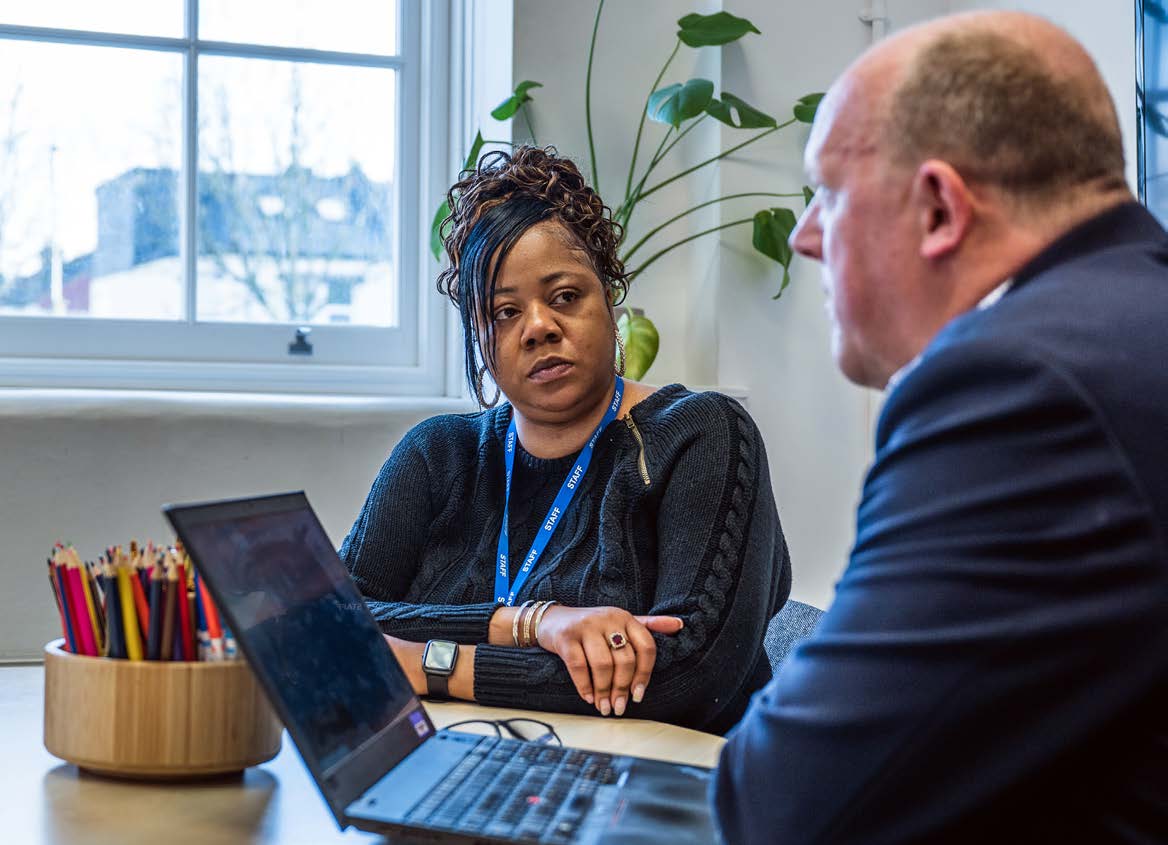Wandsworth’s Smart School Services has created a more accurate workforce planning app that is easy for schools to use and will be rolled out this spring term (2023) to schools signed up to the Schools Financial Advisory Service.
Smallwood Primary (rated Good by Ofsted in 2022) has a unique superpower – access to a really accurate workforce planning tool after signing up to financial planning support with Wandsworth’s Smart School Services. It also speeds up the time that used to be lost reconciling the payroll.
“It’s been a real journey, and the budget mirrored what was happening in other areas,” says headteacher Fiona Loudon who moved to Smallwood in Wandsworth after running a school in Scotland for 11 years. “We had quite a big deficit budget, a lot of work to do (the Ofsted rating required improvement) and we needed to save money. When I started in May 2017, we had 18 teachers leaving, so it was a really difficult time,” says Fiona who explains that alongside mainstream classes, there are 45 students in Smallwood’s Speech and Language Unit with educational health care plans (EHCP).

“A big proportion (75%) of our budget was going on staffing, but the spreadsheets didn’t show what level people were being paid, (eg, .5 or full time),” says Fiona who employs 56 staff.
Business manager, Dionne Campbell (who joined the school in 2018), adds that with figures out of sync, forecasting and pay felt, “like stabbing in the dark, with nothing that pulled the information together and no clarity.”
Things really changed when Smart Schools Financial Adviser, Charles Roberts, collaborated with a handful of pilot schools (and the payroll service) to devise a more accurate financial planning system for Wandsworth. The aim was to reduce the time and effort it takes heads and business managers to estimate the cost of the workforce and reconcile actual pay with the school’s budget.

If your forecast is out by even one or two percent of income that’s quite a chunk of cash when school budgets are managed so tightly.
Charles Roberts
“It’s a different approach to a problem,” says Charles, “and that’s important because 80 per cent of a school’s budget is spent on staffing, and if our existing Excel tool was a few per cent out, that’s material. If your forecast is out by even one or two percent of income that’s quite a chunkof cash when school budgets are managed so tightly.”
So how does the magic happen? Charles explains: “The app replicates the reality of all things that happen in the payroll service and payroll departments and is more accurate on national insurance, pensions, spreading a salary across the months in the year, managing pay rises and changes in incremental grades and also manages to model ad hoc payments for extra hours or overtime.”
This enables a school to be able to recast their budget swiftly, if asked to do so.
“Smallwood school had an annual spend of £1.3m on staffing, and the tool was £14 different, which is why it’s called RAPTOR –ridiculously accurate planning tool for organisational resourcing. Ultimately, it’s all about giving the school business manager and head teacher confidence in the numbers,” says Charles.

For business manager Dionne this new way of financial planning speeded up the accuracy of the monthly payroll as well as the six monthly forward planning. “What Charles created pulls up errors in red so we can easily identify and investigate what should be paid and answer, for example, questions about why’s that person got an extra £100 – of yes they’ve done two extra hours.”
Reconciling payroll data is no longer super time- consuming. Charles explains that’s not unusual for schools as, “Some have 40-50 employees – but the tool just highlights those employees that need to be looked at, so is driving action by exception, rather than having to work through everybody. The tool does most of the work for you and will flag those it thinks you need to look at. That creates the feedback loop, so next month it gets more accurate.”
Less discrepancies also meant Smallwood spent less time trying tocontact the payroll team – a particular plus through lockdown when many people were working from home and seemed harder to reach.
We have confidence in the staffing structure of the school, and being able to keep it at the level we need, because very quickly we can see if the percentage of pay for staff is going up, it gives us confidence about managing our budget and staff.
Fiona Loudon

Operating as a pilot, Smallwood has now been using it for a year. “Charlescomes in once a month. He has a report-ready database on his laptop which has got all of our staff data,” says Dionne explaining how the pair go through,“ line by line, so any discrepancies [eg, from sickness, pay increases, reduced hours, jury service, pensions, unpaid leave, unauthorised absence, extra hours and pension opt in and out] are highlighted quickly. It’s easier to use and really helped, as we feel more confident that this is the accurate figure on staffing and can put in any questions that governors have.
“We have confidence in the staffing structure of the school, andbeing able to keep it at the level we need, because very quickly we can see if the percentage
of pay for staff is going up, it gives us confidence about managing our budget and staff. It is now monitored so carefully, we are not going to get any big surprises,” says Fiona delightedthat the budgets are fit for purpose and reconciliation far quicker.
Dionne agrees: “Charles has been instrumental in supporting theschool and getting the budget into the really good position that it is in now. That app works really well.”
Visit finance.smartschool.services





